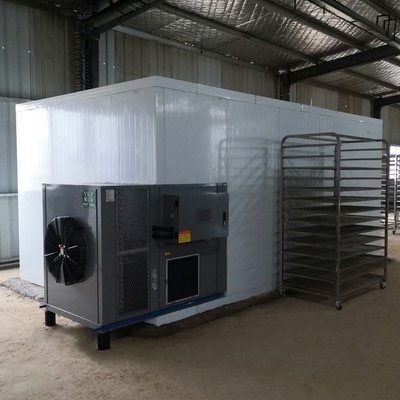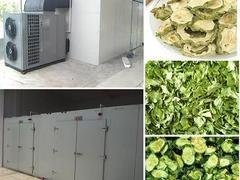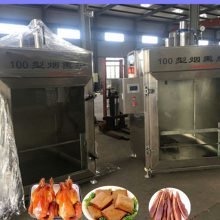
Content Menu
How To Use a Heat Pump Dryer: A Comprehensive Guide
● Introduction
● What is a Heat Pump Dryer?
● Benefits of Using a Heat Pump Dryer
● Installation of a Heat Pump Dryer
● Operating Your Heat Pump Dryer
● Maintenance Tips
● Troubleshooting Common Issues
● Conclusion
● Frequently Asked Questions
>> 1. What is the difference between a heat pump dryer and a conventional dryer?
>> 2. How much energy does a heat pump dryer use?
>> 3. Can I install a heat pump dryer in any location?
>> 4. How often should I clean the lint filter?
>> 5. What should I do if my heat pump dryer is not drying clothes properly?
Introduction
Heat pump dryers are becoming increasingly popular due to their energy efficiency and gentle drying capabilities. Unlike traditional dryers, heat pump dryers recycle air and use lower temperatures, making them ideal for delicate fabrics and reducing energy consumption. This article will guide you through the various aspects of using a heat pump dryer, including installation, maintenance, and troubleshooting.

What is a Heat Pump Dryer?
A heat pump dryer is a type of clothes dryer that uses a heat pump to dry clothes. It works by extracting moisture from the air inside the dryer and recycling the warm air to continue the drying process. This method is not only energy-efficient but also helps to protect your clothes from damage caused by high heat.
Benefits of Using a Heat Pump Dryer
1. Energy Efficiency: Heat pump dryers consume significantly less energy compared to conventional dryers, making them a cost-effective choice in the long run.
2. Gentle Drying: The lower drying temperatures are gentler on fabrics, reducing the risk of shrinkage and wear.
3. Versatility: These dryers can be installed in various locations without the need for external venting, making them suitable for apartments and homes without traditional dryer vents.
Installation of a Heat Pump Dryer
Installing a heat pump dryer is relatively straightforward. Here are the steps to follow:
1. Choose the Right Location: Select a dry, well-ventilated area. Ensure there is enough space for the dryer and that it is near a power outlet.
2. Level the Dryer: Use a level to ensure the dryer is stable. Adjust the feet if necessary.
3. Connect the Drainage: Most heat pump dryers have a drainage option for the condensed water. You can either connect it to a drain or use the water reservoir.
4. Plug It In: Connect the dryer to a power source and turn it on.

Operating Your Heat Pump Dryer
Using a heat pump dryer is similar to using a conventional dryer, but there are some specific tips to keep in mind:
1. Load Size: Avoid overloading the dryer. A full load is fine, but ensure there is enough space for air to circulate.
2. Select the Right Program: Most heat pump dryers come with various drying programs. Choose the one that best suits the fabric type and moisture level.
3. Regular Maintenance: Clean the lint filter after every use and check the heat exchanger regularly to ensure optimal performance.
Maintenance Tips
To keep your heat pump dryer running efficiently, follow these maintenance tips:
1. Clean the Lint Filter: This should be done after every load to maintain airflow and efficiency.
2. Check the Heat Exchanger: Clean it periodically to prevent blockages.
3. Inspect the Drainage System: Ensure that the drainage system is clear to avoid water buildup.
Troubleshooting Common Issues
If you encounter problems with your heat pump dryer, here are some common issues and solutions:
1. Dryer Not Heating: Check if the dryer is plugged in and the settings are correct. If the problem persists, inspect the heat exchanger.
2. Long Drying Times: This could be due to a clogged lint filter or heat exchanger. Clean them to improve efficiency.
3. Water Leakage: Ensure that the drainage system is properly connected and not blocked.
Conclusion
Heat pump dryers are an excellent investment for anyone looking to save energy and protect their clothes. By following the installation and maintenance tips outlined in this guide, you can ensure that your heat pump dryer operates efficiently and effectively.

Frequently Asked Questions
1. What is the difference between a heat pump dryer and a conventional dryer?
Heat pump dryers recycle air and use lower temperatures, making them more energy-efficient and gentler on fabrics compared to conventional dryers.
2. How much energy does a heat pump dryer use?
Heat pump dryers typically use about one-third of the energy of conventional vented dryers, making them a cost-effective option for drying clothes.
3. Can I install a heat pump dryer in any location?
Yes, heat pump dryers do not require external venting, allowing for flexible installation in various locations.
4. How often should I clean the lint filter?
The lint filter should be cleaned after every load to maintain optimal airflow and efficiency.
5. What should I do if my heat pump dryer is not drying clothes properly?
Check for a clogged lint filter or heat exchanger, and ensure that the dryer is not overloaded. Cleaning these components can often resolve the issue.












